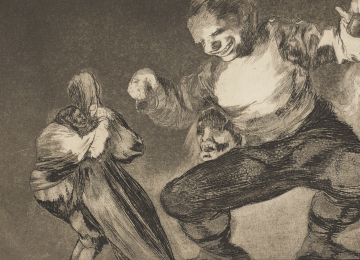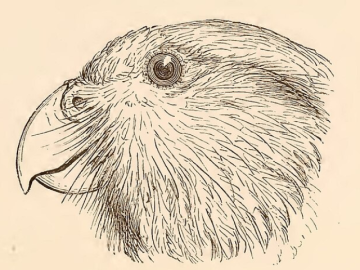The Teetering Vase Contemplates Gravity
Catherine McGuire
I.
Newton said there is no choice; this weakest
natural force still draws all things, relentless.
Apples, stones, my lucent porcelain fall
with the same force as the Moon falls, too
but Newton stood on giants' shoulders to claim
that Moon's slight elliptic – the tug askew,
a wobble in a perfect path–
saves Moon and Earth from mutual death
though most lopsided stunts, like mine,
end more bleakly. Further back,
Archimedes dreamed a fulcrum to pry
the Earth (as flat then as this table)
out of gravity’s greedy grasp. Unaware
of Osiris' scales; the weight of longing;
a heart’s fulcrum to Maat’s feather;
the Greek took credit for defining
this angled affront to gravity:
Eureka moment. Yet his body fell,
obeying all laws, when chaos conquered
Syracuse; gravity's theory swept underground.
Copernicus balled things up by relocating “down” –
showed Earth no more central than one’s point of view:
our minor orbits, in the thrall of Something More,
dance through empty space; we cede the center.
The gravitas of prudent speech quashed his theory;
his first edition a deathbed attendant.
Soon it, too, perished– and Science stayed
in proper orbit ‘round Church and State.
Kepler strained to keep celestial spheres
in perfect rounds of perfect tones, but numbers
slashed his mystic hope to shreds; he killed
what he had loved. By relocating gravity
in Sun’s great mass, he fixed Copernicus
in Science’s celestial sphere. His own life
less than heavenly: weighed down by thirteen
children, war, his mother’s witchcraft trial –
he wrote of one who travelled to the moon
in dream – described the surface as it was…
and so, who knows? It took Sir Isaac
to break us free; set gravity amid
the laws of motion; absolute perfection
of a clock-work Universe.
II.
Gravity alone disturbs so little,
but its stubborn grasp creates a risk
in every motion, however slight.
My teetering describes an arc
of possibility – who of us
can say what sends us past the edge? As slight
a difference as the weight of shadow; camel’s
straw; the avalanchial snowflake.
Einstein’s pencil pushed the world into
relativity – nothing still; no motion absolute
except the speed of light. This table’s rest
seems so because I wobble; earth’s unfelt
spin must still be factored in. Time
passes slow or fast depending on
the speed of motion – does this explain
why time slows down at descending’s end?
Einstein’s theories made Newtonians see red,
but light bent to his will, revealing gravity
in starlight – and the dark of matter, too.
The grave threat bursting from an atom’s heart
a red-shift toward a darker time. Dust
to dust... his ashes scattered to the wind.
Richter put deep thought into the whys
of quaking ground – how earth can ripple
just like water, liquifying solid clay;
as sudden as love or death. Our balance
relative, ignored – presumed – until it's lost.
And continents can drift, and lives–
shuddering asunder, grinding to a halt.
Shards of lives – the gravel on which we live.
Since then, the swarm of physicists, those
who snoop out bits unseen, declared all solids
to be full of emptiness – all
our atoms vast plains of lonely Nothing.
What falls if nothing’s there? The quantum
querists hunt down and exculpate
electrons of their very existence: wave,
particle – it’s all the same, until
you look. And those who look tomorrow
will find them as fragmentary as
my future self.


